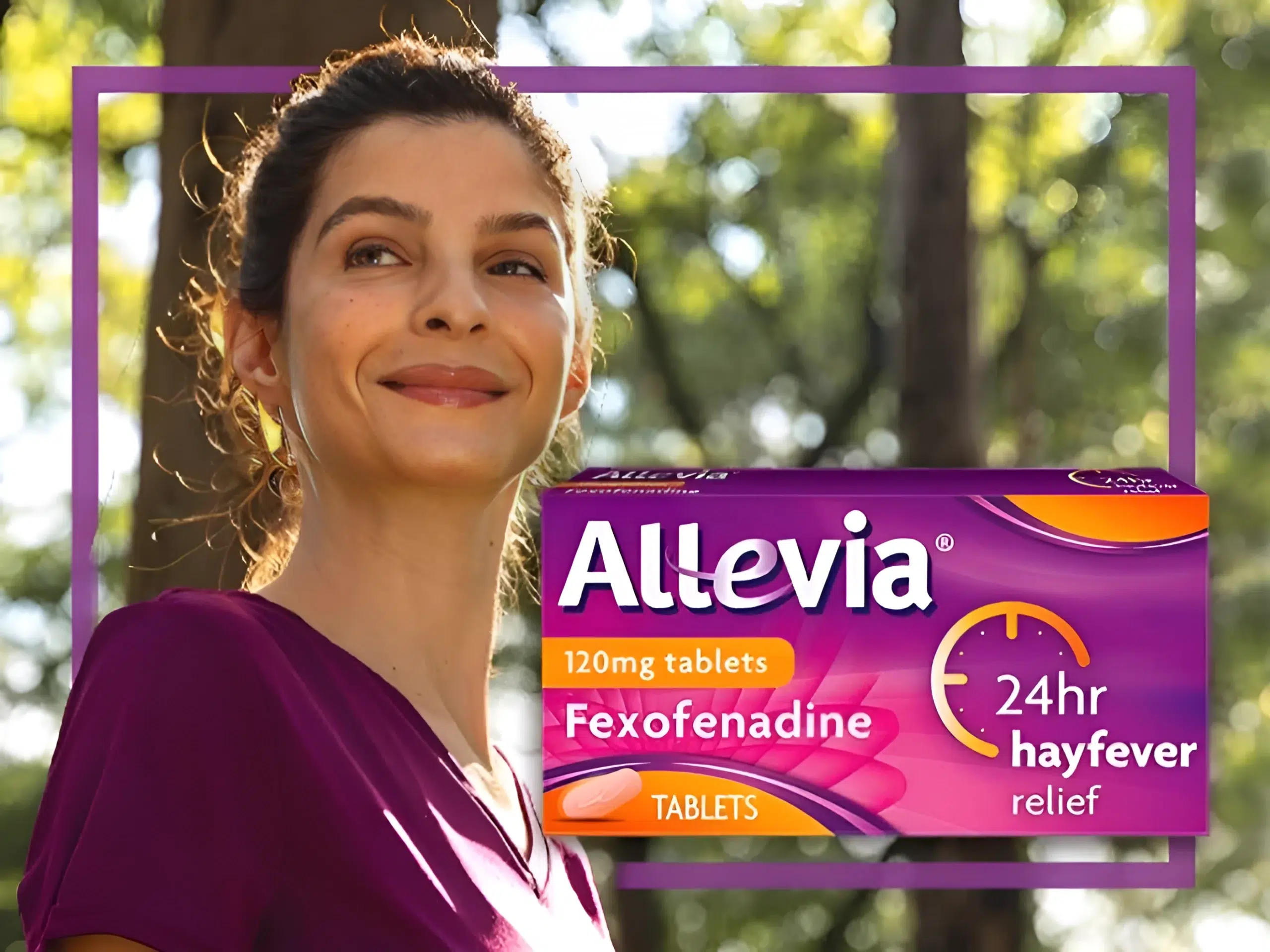
January 29, 2024
In Blogs

Consumer spend is growing across Health and Wellness categories with shoppers buying more products across a wider range of categories. At the same time, retailers are focused on optimising their ranges and are putting a critical eye over their offers. This has brought more pressure upon suppliers to protect and grow their range and space on the shelf.
In the past, suppliers might have been able to rely on negotiation alone to sell-in their brand, but they now need to think more strategically, establish collaborative partnerships with retailers, and focus on driving category growth.
In this interview, Gina Overton, Managing Director at Bridgethorne, part of Ceuta Group, an IQVIA business, discusses the growing need for Health & Wellness businesses to invest in commercial capability building and outlines strategies to efficiently embed these skills throughout their organisations.
“There’s a growing need for brands’ commercial teams to tailor their approach to each retailer – to an extent that hasn’t been done before.”The Health & Wellness market is growing at an exceptional rate with more consumers embracing health and wellbeing as a way of thinking and living rather than just a solution for illness or injury.
Whilst consumers cut back spending in certain areas like clothing and electronics, we’re seeing an increase in spending in beauty and personal care categories. This is set to grow as consumers become more focused on managing and understanding their personal health and wellbeing. From enriched beauty to women’s health to VMS and supplement shakes, we are seeing established brands diversify their portfolio into new markets, as well as the emergence of challenger brands looking to gain market share.
This increased demand means that retailers will need to rethink their Health & Wellness offers both in terms of products and categories. However, whilst retailers are keen to grow their ranges, they don’t have infinite space on shelf. They also need to ensure they optimise the range to benefit consumers whilst remaining commercially viable.
Therefore, there’s a growing need for brands’ commercial teams to tailor their approach to each retailer – to an extent that hasn’t been done before.
As retailers become more selective, commercial teams need to meticulously plan how to collaborate with them commercially and strategically and develop shopper-driven strategies to help the retailers achieve their category and customer goals.
Brand commercial teams need to understand the retailers they want to work with and their objectives.
Retailers are desperate for businesses to bring their knowledge, insights, and understanding as to why their brand is relevant and desirable to the store’s customers and how it can grow the category.
Retailers work best with companies that collaborate with them to bring benefits to the retailer as well as the brand. But that requires commercial teams to use a different approach than they might have done in the past. It isn’t just about negotiating any more. Of course, negotiation is still an essential skill for a brand’s commercial team to have, but their approach should be more category-focused and customer-centric.
“Commercial teams need to use a different approach than they might have done in the past. It isn’t just about negotiating any more.”They need to be able to align their strategy with the retailer’s and approach them with clear category stories and “reasons to believe” the brand will benefit the category and its customers. We call that category-based selling.
A lot of Health & Wellness brands might come to the retailer as “brand sellers” with brand-centric approaches, talking only about their brand. But the retailer wants to understand it from the wider context of the category, why there is an opportunity for the brand to exist in that category, what role it would play, and whether it offers something that the store customers need or would find desirable enough to increase their spending in that category.
Brand commercial teams now need to plan in detail how they are going to work with the retailer and achieve success for both parties. It’s about collaborating and developing innovative strategies to drive in-store brand awareness and sales, drive footfall, and boost the category margin.
Retailers prioritise a customer-centric approach. Commercial teams must grasp the demographics of the store’s shoppers and effectively communicate the reasons their brand stands out as more relevant and desirable than competitors.
Commercial teams need to demonstrate their understanding of the store’s customers to the retailer, including the path to purchase, shopper mission, and shopper decision hierarchy. Importantly, they need to communicate how they will address these factors in their promotional strategy to activate customer awareness and drive sales, including any supporting material or education required to ensure the customers understand the brand’s concept, relevance, and value.
Understanding the retailer’s customers, the variety of products they might choose from, and how they make that purchase decision is crucial.
Brand commercial teams need to ensure strong skills in data mining and interpretation. Coming to the retailer with stats and facts, raw data related to price, promotions, and their brand’s products, without any interpretation, will no longer be possible.
Retailers are after insight — they expect suppliers to leverage data to showcase their brand’s significance within the category and appeal to the store’s customers. They also expect guidance on how best to display the brand across channels and formats to boost sales and improve overall category performance.
“The supplier-retailer relationship should be more collaborative than transactional.”Therefore, Health & Wellness businesses should strengthen their commercial capabilities in data analysis and interpretation. They must learn how to use data to validate insights and their hypothesis on how the brand will grow the category and then effectively communicate this information to retailers.
Moreover, the supplier-retailer relationship should be more collaborative than transactional. Brand commercial teams should put themselves in the shoes of the retail buyer they are working with, appreciate their roles and areas of focus, and work with them to drive results for both parties.
Yes. Brand commercial teams need to know how to tailor their strategy to each retail channel — it’s not a one-size-fits-all approach.
Retailers will pay attention to the external marketing and TV campaigns you’re doing, but their primary interest will lie in understanding how you plan to activate customer awareness and boost sales in-store.
Brand commercial teams should understand each retailer’s retail media options, appreciate their category growth objectives, and determine how as a supplier, they can support that growth.
Also, each retailer has a different retail planning cycle, in which they plan and organise their strategies, goals, categories, products, and merchandising for a certain period, whether that’s for a year or even for the next three years. Suppliers need to understand and align their launches and strategies with these cycles. If they were to approach a retailer with a new launch plan after the category product range and merchandising had been confirmed, they would be battling against a wall.
Contrary to what many may think, building commercial capability extends beyond just the commercial teams. It should be ingrained throughout the entire business, starting with the brand strategy, development, and marketing teams, and extending seamlessly to the commercial team. This integration ensures more effective communication and strategies across all facets of the organisation.
“For a triple win – benefiting the category, retailers, and customers – both commercial and marketing functions need to join forces.”Typically, whilst marketers gather a great deal of consumer and market research, they need to develop an understanding of their retailers to achieve strategic alignment. Often, marketers will shape their brand strategy based on a target consumer group, but there is a gap in considering the specific retail categories and shoppers who play a role in activating and influencing the brand within the retail environment.
Simultaneously, the commercial team needs to gain insights from the data proposed by the marketers as a way forward, ensuring clear reasons to believe that bring added value to category growth opportunities. This collaborative effort ensures a cohesive approach that integrates both consumer preferences and strategic retail considerations.
For a triple win – benefiting the category, retailers, and customers – both commercial and marketing functions need to join forces. By strategically planning and implementing category and customer-centric approaches, a cohesive strategy can be achieved that caters to the needs of the category, satisfies the retailers’ customers, and meets specific objectives.
“Bridgethorne believes that the impact we’ve been able to make for our clients comes from how closely we understand them and bespoke their experience.”Ceuta Group’s commercial capability and consultancy team, Bridgethorne empowers Health & Wellness organisations to work more effectively at every stage of their brand’s journey through close consultation and a variety of tailored capability-building courses.
Our approach involves immersing ourselves in our clients’ worlds, gaining a deep understanding of their brand needs, objectives, current category and commercial performance, challenges, opportunities, target consumer groups, and strategic alignment areas. We work with cross-functional teams to improve collaboration and understanding and bring them together to maximise opportunities.
Our commitment extends to creating an immersive, practical experience that equips individuals and teams with easily implementable skills and strategies.
Bridgethorne believes that the impactful results we achieve for our clients come from our close understanding and bespoke tailoring of their experience. For instance, when supporting a client in improving strategic alignment, we may challenge them to work on customer-focused “look-alike” case studies. This exercise encourages them to identify conflicts and sweet spots, empowering them to resonate with retailers and effectively manage conflicts or pressures in future interactions.
Ceuta Group’s Commercial Capability & Consultancy Team, Bridgethorne, stands as a transformative ally for Health & Wellness brands navigating the complex landscape of commercial capability. With our bespoke and practical training courses, we empower brand teams to strategically adapt and thrive in an evolving market.
From understanding customer-centric approaches to mastering data interpretation and category-focused strategies, the expertise gained through our commercial capability training becomes an invaluable asset for brands striving to secure retail success.
Get in touch to discuss how Ceuta Group, an IQVIA business, can enhance your team’s commercial capability, support you with expert advice and winning strategies, or fully manage your brand with our end-to-end outsourcing services.
To find out more about how to unlock the true potential of your brand, get in touch.
Contact us